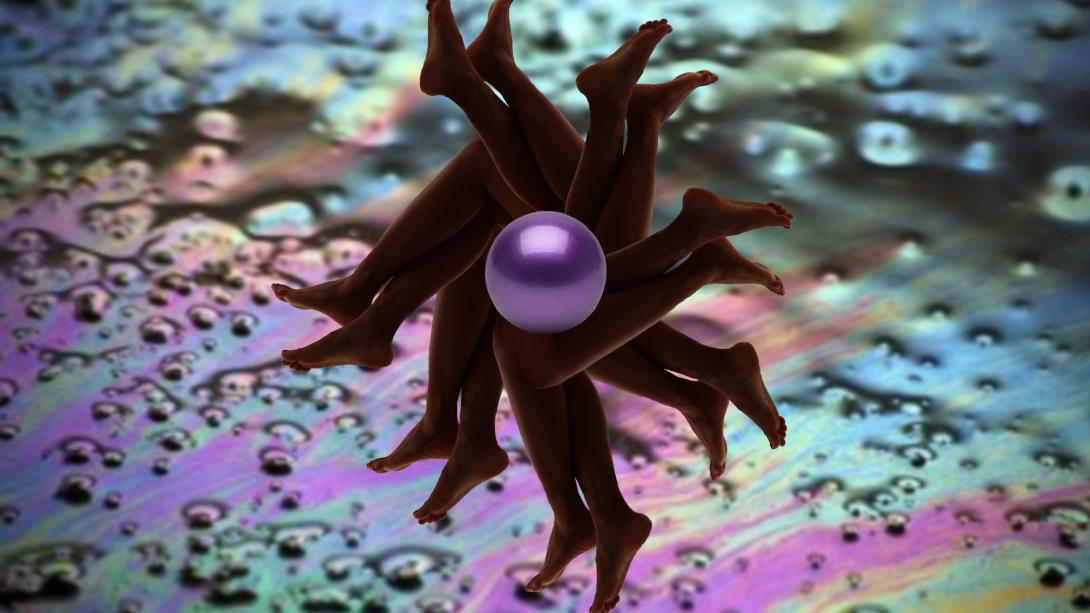Monira Al Qadiri
APT9
Born 1983 Dakar, Senegal
Lives and works in Berlin, Germany
Through sculpture, installation and video, Monira Al Qadiri has been exploring the historic and aesthetic connections between oil and pearls, two disparate industries in the Gulf that have interconnecting histories. Both require laborious extraction and are associated with wealth and status. A major source of livelihood for the Gulf region for centuries, the pearling industry and its rich cultural traditions declined rapidly following the discovery of oil in the 1900s and the development of mass-produced pearls in Japan. Now nations such as Kuwait are preparing for a post-oil future, and Al Qadiri suggests comparisons with the historic waning of the pearling industry. Beautifully executed with seductive surfaces, Al Qadiri’s works subtly comment on the intersections between commerce, culture and labour.

Monira Al Qadiri / Senegal/Kuwait b.1983 / DIVER (production still) 2018 / Four-channel video projection: 4:3, colour, sound / Produced by Durub Al Tawaya (DAT), the performing arts program of Abu Dhabi Art, Warehouse421 Abu Dhabi and the Asia Pacific Triennial of Contemporary Art (APT) / © Monira Al Qadiri / Image courtesy: The artist
Monira Al Qadiri explores the historical and aesthetic connections between oil and pearls, including their respective industries, through her video installations and sculptures. The pearling industry was a major driver of the Persian Gulf’s economy in the 1800s. It waned in the early 1900s and was superseded by the oil industry in the second half of the century. DIVER 2018 connects these two seemingly disparate moments in history, and explores the difficult working lives of historic pearlers and the incredible wealth generated by the modern oil industry.
The surface of pearls and oil reflect a coalescence of multiple colours, and Al Qadiri uses this to great effect in her works. In DIVER, synchronised swimmers wear reflective bodysuits resembling the sheen of oil and pearls. Their movements are choreographed to a contemporary remix of old pearling songs. The music pays homage to the artist’s grandfather, who was a singer on a pearling ship. Pearling boats were often assigned a singer, as it was hoped their songs would boost morale in this dangerous occupation. With the loss of pearling traditions, these songs now only play in tourist centres or are found in anthropological recordings. In Al Qadiri’s installation, sound and image come together in a combination of technicolour aqua-musical and haunting mourning ritual.
